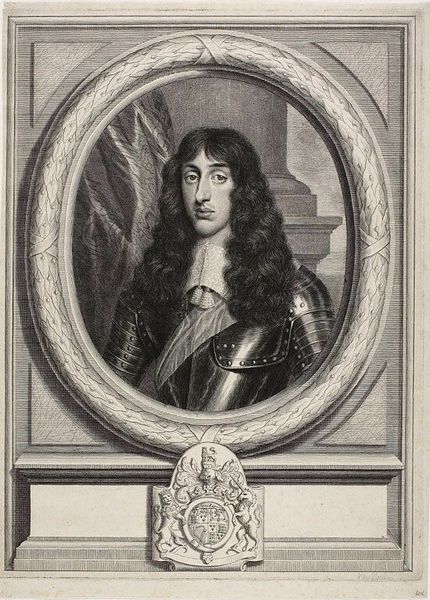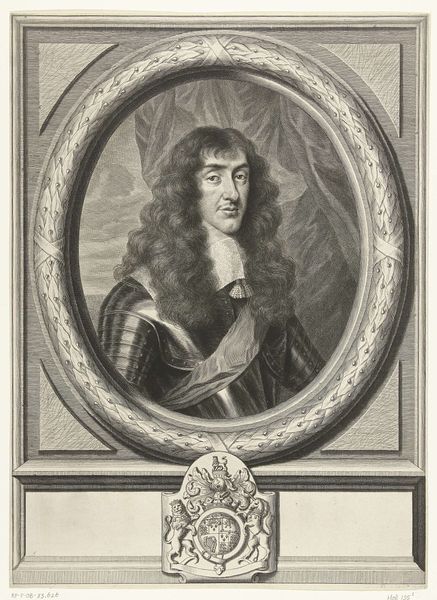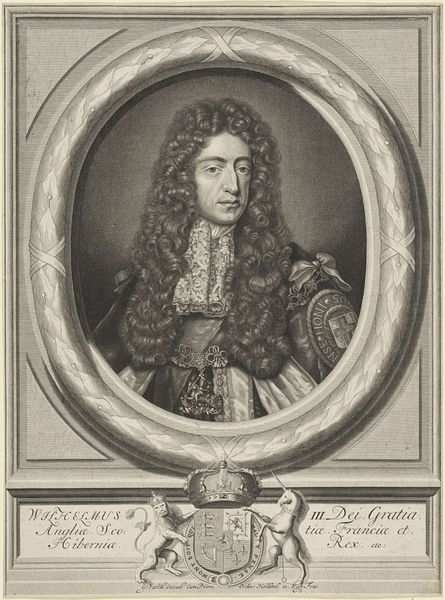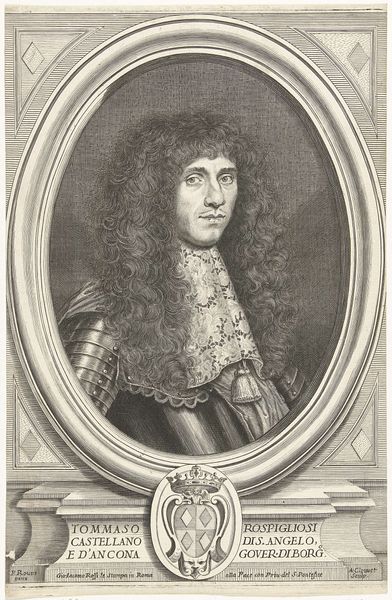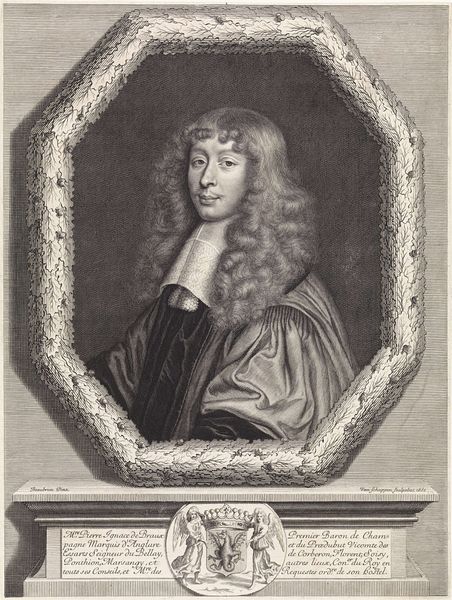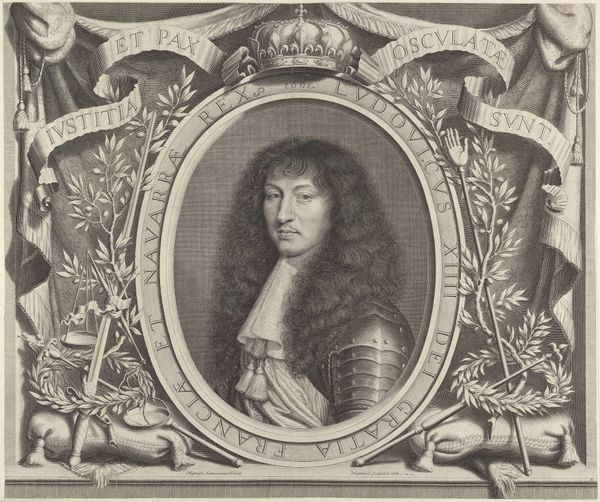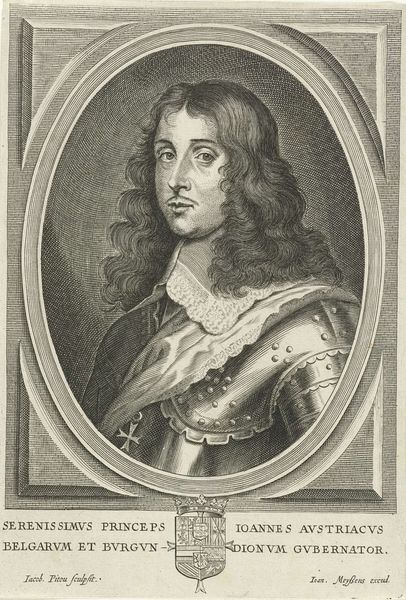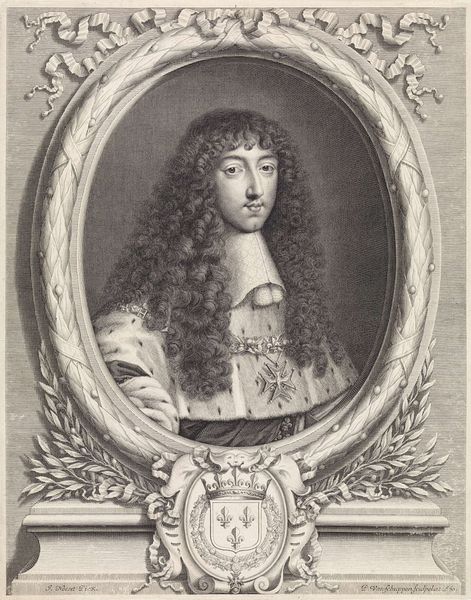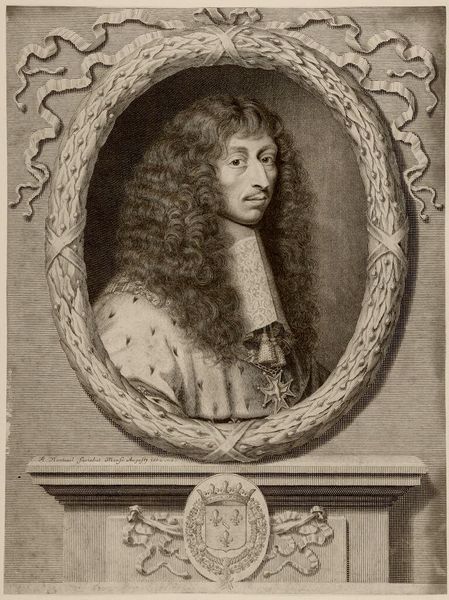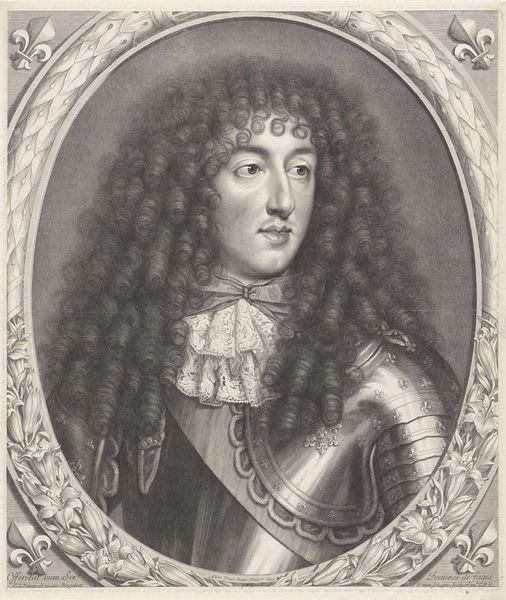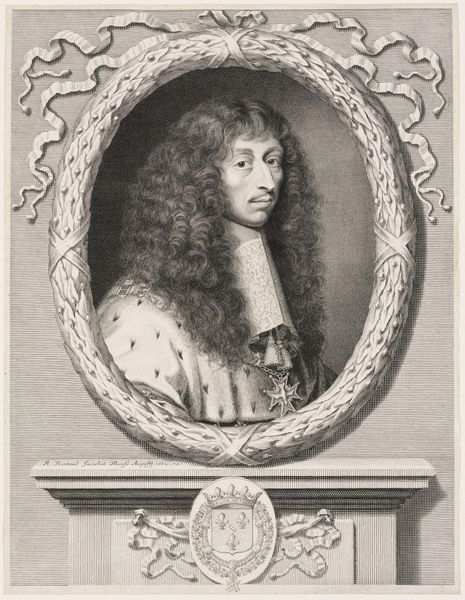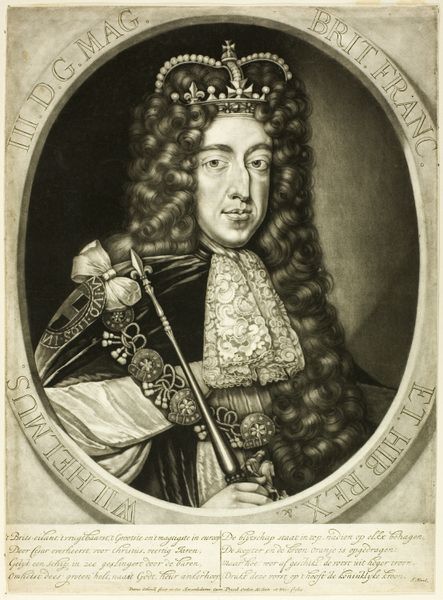
print, engraving
#
portrait
#
baroque
# print
#
engraving
Dimensions: height 379 mm, width 284 mm
Copyright: Rijks Museum: Open Domain
Editor: Here we have "Portret van Henry Stuart in ovale omlijsting," made sometime between 1648 and 1664 by Cornelis van Dalen II. It’s an engraving, so a print, and there's something about the starkness of the black and white combined with the ornate frame that feels both regal and a bit melancholic. What do you see in this piece? Curator: This portrait encapsulates the complex visual strategies used to reinforce power and status in the Baroque period. Consider the context: Henry Stuart, Duke of Gloucester, was part of the exiled Stuart monarchy. Prints like these, widely disseminated, were crucial for maintaining the family's image and legitimacy during their time away from the throne. The armor suggests strength, but the oval frame, the inscription, and the heraldry speak to his lineage and rightful place in society. It’s a performance of power, if you will. What does the heraldry suggest to you about how the Stuarts are publicly portraying themselves? Editor: I suppose it reinforces the idea of a birthright, almost a divine right to rule? That even in exile, they’re still the rightful kings. Curator: Precisely! And think about the act of creating a print. It inherently broadens the audience. These images could be circulated among supporters, reminding them of the Stuart claim to the throne and keeping the hope of restoration alive. It is a conscious act of political maneuvering, disguised as a simple portrait. Editor: So it’s less about the individual and more about the institution, the monarchy? Curator: Indeed. It’s a carefully constructed representation designed to manipulate public perception. Even the choice of engraving – a medium allowing for precise detail and mass production – plays into this strategy. Did this change the way you consider similar portraits? Editor: Absolutely. It makes you realize there is so much more behind them than just capturing a likeness. Curator: Exactly, the art is in how it positions its subjects within society and impacts socio-political perception of its audience. It’s a complex dialogue between artist, subject, and viewer that echoes even now.
Comments
No comments
Be the first to comment and join the conversation on the ultimate creative platform.
